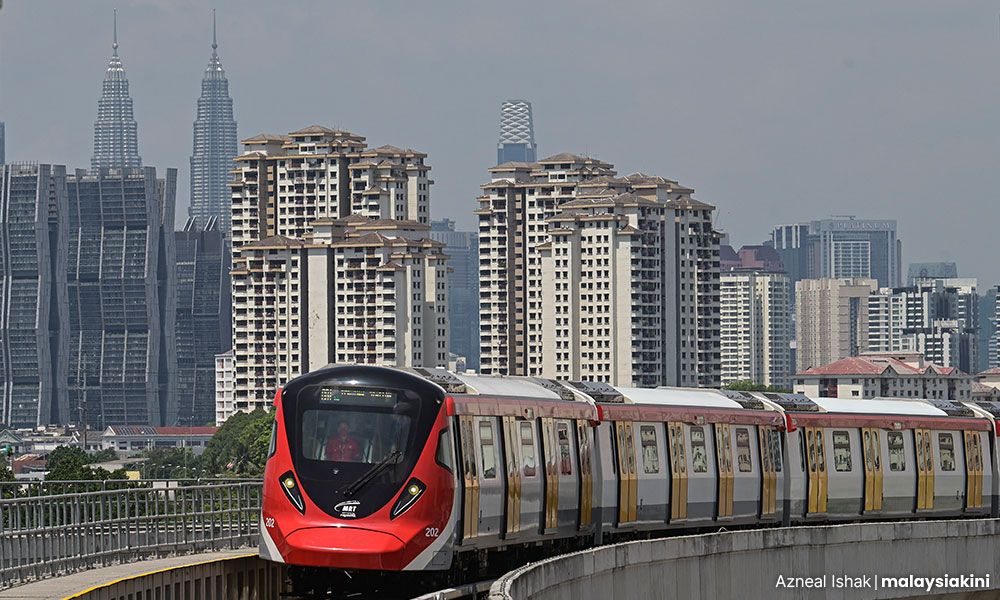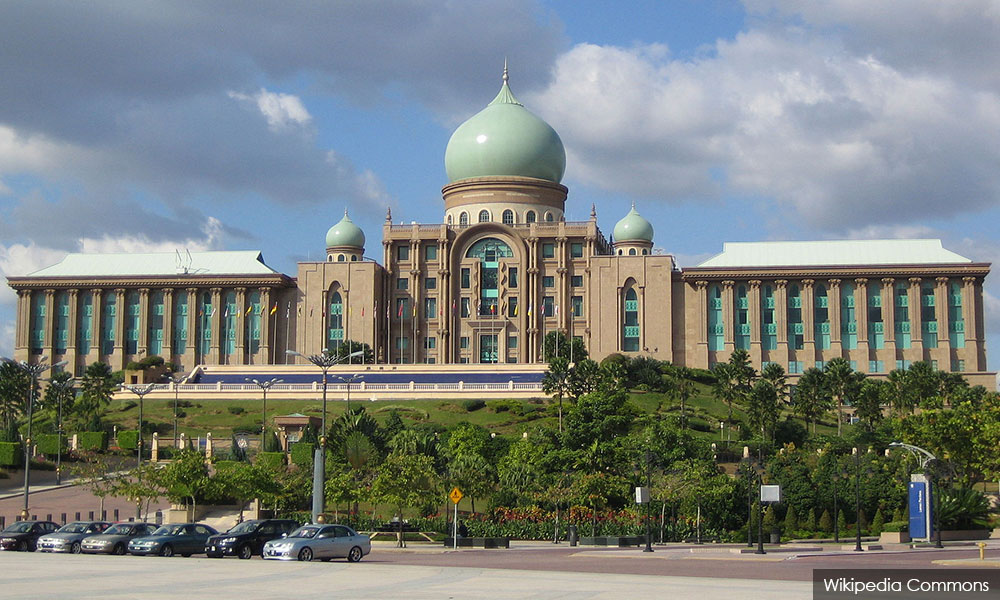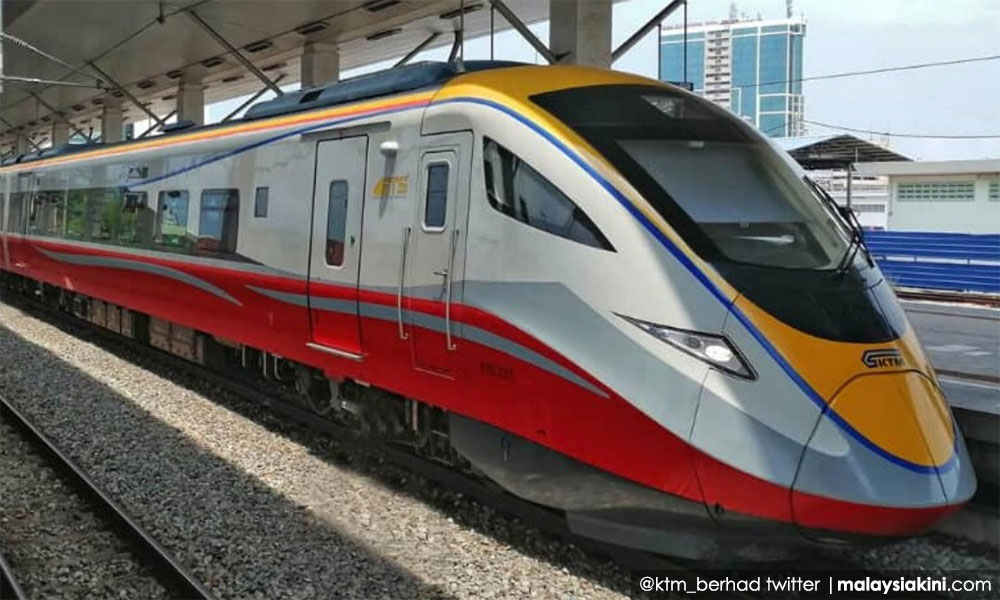LETTER | Recently, I read two articles, “Large-scale infrastructure projects can further spur Malaysia’s economic development” and “HSR will give economy boost” in the New Straits Times.
The justification is, that they generate spillover effects and employment opportunities and in turn, enhance productivity and ensure that Malaysia maintains its global competitiveness. An upside can be driven by light rail transit (LRT), mass rapid transit (MRT) and Pan Borneo Sabah highway projects.
This worry came after an underwhelming performance in the fourth quarter of last year.
It is said, that the Kuala Lumpur-Singapore high-speed rail (HSR) project will provide Malaysian firms and talents access to a vast and untapped market (the China-Asean Economic Trade Zone, the Eastern Economic Corridor in Thailand, and sub-regional economic zones).
It can encourage the economy to develop deeper integration with its neighbours and place Malaysia among the world’s 30 largest economies.
It will transform how people travel (reduced journey time, safe and seamless) and conduct business, in light of the forecast growth of the southern corridor’s total demand to exceed 250 million annual journeys by 2060. Studies indicate that the HSR will be able to accommodate 140 million additional trips per year.
Questionable figures
Just stop for a moment and think. They are mostly subjective and the line is only between Kuala Lumpur and Singapore. Even the numbers don’t seem right.
Look at the Klang Valley MRT project. An economic transformation programme (ETP) fully funded by the government envisaged to radically improve and transform Kuala Lumpur’s poor and sorely inadequate public transportation coverage.

It was also envisaged for a fivefold increase in rail ridership. And most agreed that the project will generate immense economic contribution and investment returns.
Now, after seven years of operation of Line 1, and one year for Line 2, how do we rate it?
Last year, the Transport Ministry instructed Prasarana Malaysia Berhad (Prasarana) to look into the technical issues and the poor state of facilities that have occurred frequently involving the LRT and MRT services and what about ridership? Traffic jams are still a permanent feature. LRT has been in operation for more than twenty-four years and still struggling with technical issues.
Then, there are funding issues for the RM39 billion MRT3 Circle Line.
And where are the economic contribution and investment returns? MRT Corp’s financial position as of Dec 31, 2022 itself, showed an accumulated loss of RM57.5 billion.
Prasarana is the parent company of Rapid Rail, which operates LRT and MRT services and Rapid Bus. As of end-2019, Prasarana had accumulated losses of a whopping RM42.41 billion.
The above companies continue to operate outside the ambit of parliamentary budget allocations and are not subject to the usual checks and balances including audits.
Justifications
Back to HSR.
Other justifications include that there are more than 30,000 flights annually on the Kuala Lumpur-Singapore air corridor - among the busiest international routes in the world and the transportation sector’s carbon emissions accounted for 28.8 percent of Malaysia’s total fossil fuel combustion.
Now we look at the ball game or status of the HSR, also an ETP project.

The Singapore transport minister said the main reason for termination in 2021, was Malaysia’s suggestion to remove the assets company AssetsCo, a “best-in-class industry player” appointed through an open tender, to provide the means to run and operate the network. Both countries are inexperienced.
In July 2023, MyHSR Corp called for a request for information and to officially submit concept proposals under a public-private partnership.
In January 2024, seven proposals were submitted. Japanese companies were not interested as there would be no government financial support.
In December 2023, Prime Minister Anwar Ibrahim said the government would proceed with HSR if it could substantially lower the cost as the government needed to focus on other areas such as education, healthcare, and infrastructure projects, as well as increased expenditure for Sabah and Sarawak.
In March 2024, the transport minister said Anwar asked him to discuss the matter and is open to any proposals. He added the project will not involve government funding and implemented through private fund investment.
But he also said assessment of proposals to focus on minimising the government’s financial input! What a contradiction!
In a written parliamentary reply, the Transport Ministry stated that the evaluation of the proposals is expected to take two months to complete and we are now in April.
Sources in the industry said a consortium had requested in its proposal that the government compensate it if the number of passengers falls below a minimum number. It is separately eyeing opportunities to acquire and develop land around the railway stations as another source of income.
Another one asked for some form of government financial support.
Thus far, we only hear the pros, but what about the cons?
HSR is unaffordable
Analysts believe that private financing alone cannot revive the project. They say that for the HSR to be commercially viable, private companies would need state support for land acquisition, subsidies for train tickets, and maintenance of the infrastructure.
I trust the government takes into account the Public Finance and Fiscal Responsibility Act that limits the country’s debt level to 60 percent of the gross domestic product (GDP), and financial guarantees to 25 percent of the GDP.

In September 2023 it was at 63.8 percent of GDP.
A research fellow at the Institute of Malaysian and International Studies at Universiti Kebangsaan Malaysia said, “Malaysia simply can’t afford an HSR. It would be fiscally irresponsible for the government to fund it, and we will be passing the debt on to future generations to bear.”
Implementation of large-scale projects entails risks of aggravating socio-spatial exclusion through land acquisition and displacement of population and as a result of the created infrastructure, environmental destabilisation including urban fragmentation.
It displaces minorities, and reduces neighbourhood employment opportunities and economic policies that promote skilled employment, thereby penalising relatively less educated groups.
Studies show the claim that growth creates employment is a “key ideological prop” for the growth machine and is not sustainable.
What would be the implications for the Malaysian airline companies and would savings in carbon emission help when the HSR project cries for help from the government? In 2018, the then prime minister scrapped the project saying the decision was to “avoid being declared bankrupt” in an interview with the Financial Times. How about our household’s median income?
We still have not sorted out the first- and last-mile connectivity issues in our present rail system and the feeder bus service is sub-par at best.
We may want to do a catch-up with Indonesia but do we consider the issues and that the consortium had requested the government to extend its operating rights to 80 years from the initial 50?
And our express rail link concession agreement was extended by another 30 years. The Auditor-General’s Report 2015 revealed weaknesses and the formula of compensation does not benefit and protect the interest of the government as it was based on very high projected earnings.
Good governance
The environmental benefits claimed by HSR should be compared especially when cars and planes are becoming more fuel-efficient.
There is already an electric train service from Padang Besar to Johor Bahru, and the trip from Kuala Lumpur to Johor Bahru is only a couple of hours more, why do we need the RM110 billion project?

Contractors and powerful actors who make money upfront during the construction stage will acquire and develop land around the railway stations and make more money, leaving the government to worry about the viability of operations throughout the concession agreement.
Nowadays, we are fond of setting up a royal commission of inquiry. I hope we do not need one for HSR many years from now.
Therefore, I suggest that the government, in the spirit of good governance, set up a truly independent committee to review the outcome of the findings of MyHSR Corp and the Transport Ministry before a final decision is made and to table it in Parliament.
This should apply to all large-scale infrastructure projects.
“We don’t inherit the Earth from our ancestors, we borrow it from our children.”
What say you?
The views expressed here are those of the author/contributor and do not necessarily represent the views of Malaysiakini.

